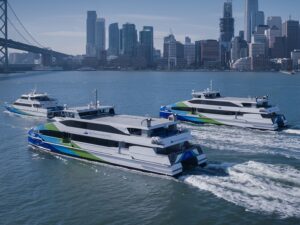
WSF reveals more details of proposed conversions to LNG fueling
Written by JUNE 28, 2012 — Washington State Ferries (WSF), a division of the Washington State Department of Transportation (WSDOT), has updated an RFP it has out that solicits interest from consultants in assisting Washington State Ferry (WSF) in conducting a safety and security assessment and development of operational plans in preparation for a possible conversion of WSF Issaquah class vessels for the use of liquefied natural gas (LNG).
JUNE 28, 2012 — Washington State Ferries (WSF), a division of the Washington State Department of Transportation (WSDOT), has updated an RFP it has out that solicits interest from consultants in assisting Washington State Ferry (WSF) in conducting a safety and security assessment and development of operational plans in preparation for a possible conversion of WSF Issaquah class vessels for the use of liquefied natural gas (LNG).
It has now posted a Concept of Operations that describes exactly how WSF proposes to convert the Issaquah class vessels from diesel to liquefied natural gas (LNG) as a source of fuel for propulsion. The detailed document is provided to assist prospective consultants in preparing proposals, as is a newly posted Question and Answer document.
All six Issaquah class vessels are 328 ft long. Built and commissioned in the early 1980s, all were built to carry
1,200 passengers and 100 cars. However, in the 1990s five of the vessels were modified to carry
130 cars, leaving just one unmodified.
WSF’s tentative retrofit plan envisions the switch to LNG would yield fuel savings of up to $195.5 million for the Issaquah class ferries from the first potential conversion in 2015 to the retirement of the last converted vessel in 2042. LNG operations could also significantly reduce emissions, with nearly a 100 percent reduction in particulate matter and sulfur oxides, a 90 percent reduction in nitrous oxides and a 20 percent reduction in carbon dioxide.
The repowering LNG fueling would include the removal of the existing GE 12V-228 diesel engines and installation of either a single fuel natural gas engine from Bergen or a dual fuel engine from Wärtsilä. The existing diesel fuel tanks would remain intact on the vessel and the ship’s service generators (SSDG) would use the day tank which would provide approximately 30 days of fuel for the SSDG’s. The LNG tanks would be located on the upper deck which is not used by passengers. There would be two tanks that are skid mounted located either side of the stack. The tanks are an integral assembly with a cold box and control system built in to control the bunkering process as well as the vaporization of the LNG to gas for use in the engines. The tanks are manufactured using the same technology used in the tank trucks certified to travel over the road. The capacity of each tank is 100 cu.m for a total capacity of 200 cu.m per ship.
Changes to propulsion engines and associated piping to include as appropriate:
- Remove existing main engines in No 1 and No 2 engine rooms
- Install new natural gas main engines in No 1 and No 2 engine rooms
- Install two LNG storage tanks 100 cu.m each on the uppermost deck
- Install one LNG bunkering station on the No 1 end of the Car Deck
- Install two natural gas supply lines: one to each engine room in double wall pipe
- Install a wet main engine exhaust system for each engine
- Install vent system and mast 30 feet above the deck
Gas detection system integration would be provided as a package from either engine supplier that meets IMO regulations.
Control and monitoring instrumentation would also be provided as a package from either engine supplier.
Electrical equipment would include sensors for gas detection and ventilation system for vent system.
For fire suppression would see installation of a deluge system for each pilothouse and a dry chemical system for the bunkering station.
LNG bunkers will be supplied via tanker truck and bunkering will be conducted, as at present, during night tie-up. A pump trailer is used to transfer the LNG from the tanker truck to the LNG tanks on deck, a lift of approximately 26 feet.
http://www.wsdot.wa.gov/Business/Consulting/Ads/Open/2012_Safety.htm

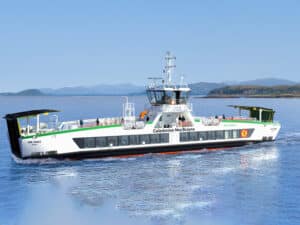
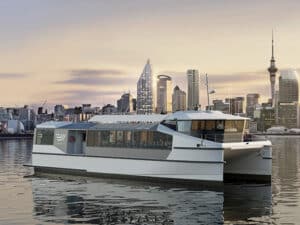
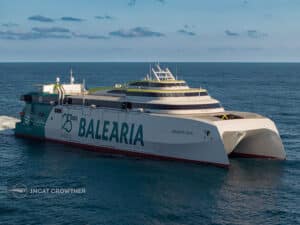
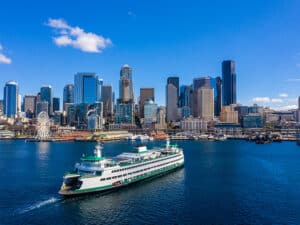
Leave a Reply
You must be logged in to post a comment.